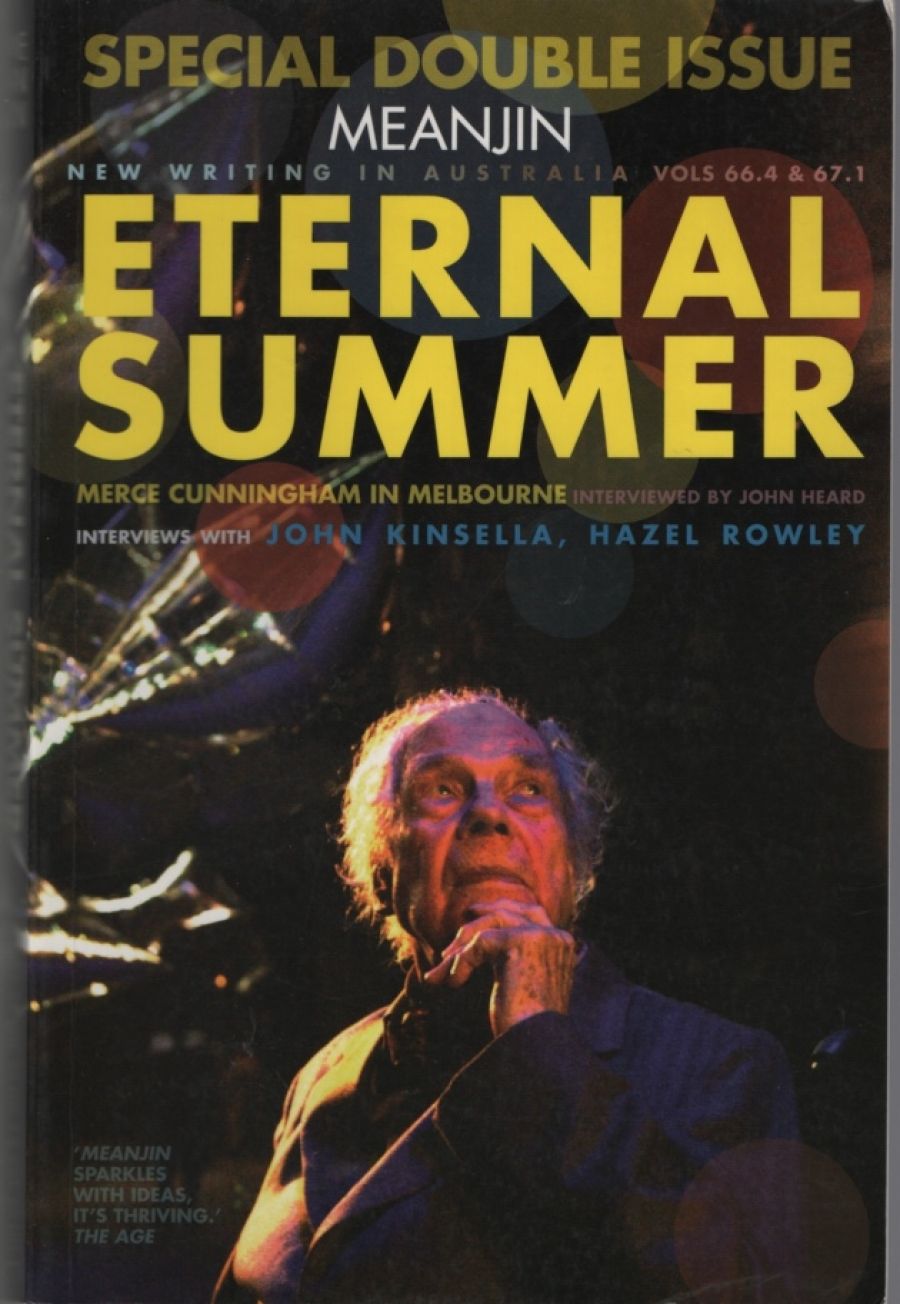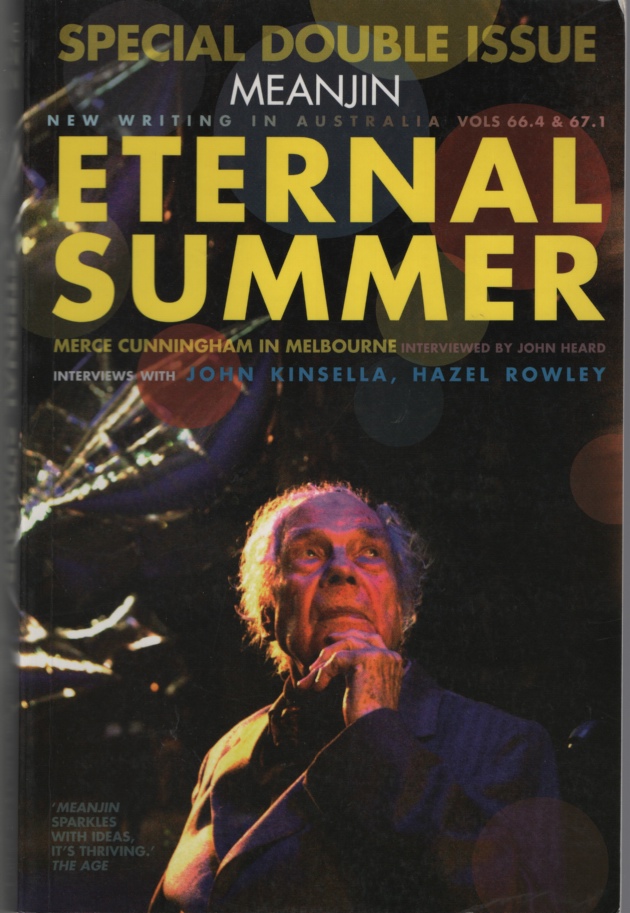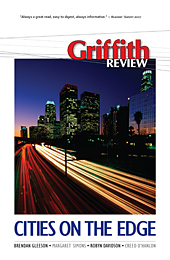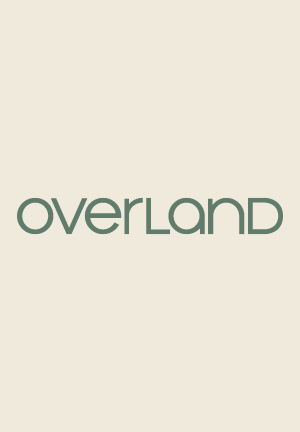
- Free Article: No
- Custom Article Title: JOURNALS
- Review Article: Yes
- Article Title: JOURNALS
- Article Subtitle: All we stand for
- Online Only: No
- Custom Highlight Text:
Robert Drewe, one of Australia’s most absorbing fiction writers, has prime position in the opening pages of the latest Meanjin. ‘The Aquarium at Night’ is so deft and engaging it draws me in, almost despite myself. It is a story about boys, surfing, prison life and ‘easygoing’ Australian masculinity. These topics may not immediately appeal, but the story stirs with the rhythms of memory, desire, the slow burn of maturing manhood, and the role that writing plays in coming to confront one’s self. Drewe’s prose seduces and convinces: a man remembering his childhood self is ‘A skinny, mop-headed grommet leaning out the window to check the morning’s wind and weather for the day’s surf potential and dreaming of legendary breaks. By 6.15 he’d be over the ridge and in the ocean.’ An incidental character in the prison Creative Writing class is ‘[a] twenty-stone Christian who’d decapitated his son-in-law with an axe for infidelity’. This is what draws me in, the sagacity of the prose, its grounded eloquence, its lack of mere aesthetics.
- Book 1 Title: Meanjin, Vol. 66, No. 4 & Vol. 67, No. 1
- Book 1 Subtitle: Eternal Summer
- Book 1 Biblio: $34.95 pb, 368 pp
- Book 1 Cover Small (400 x 600):

- Book 1 Cover (800 x 1200):

- Book 2 Title: Griffith Review 20
- Book 2 Subtitle: Cities on the Edge
- Book 2 Biblio: ABC Books, $19.95 pb, 240 pp
- Book 2 Cover Small (400 x 600):

- Book 2 Cover (800 x 1200):

- Book 3 Title: Overland 190
- Book 3 Biblio: $12.95 pb, 96 pp
- Book 3 Cover Small (400 x 600):

- Book 3 Cover (800 x 1200):

There is much sagacious writing in this double issue of Meanjin, Ian Britain’s last as editor. Fiction, poetry and essay predominate. Try the tight, poised lines of Brenda Walker’s story ‘That Vain Word No’, a sliver of insight across the lives of two ageing men, William and Dan, one a surgeon and one a neighbour, ‘at sixty-seven, dying, and in love’. The story makes you understand, or momentarily accept, the overflowing and unstoppable losses of life which cannot be extricated from what makes living so precious; life overheard through the figure of Dan, speaking on the phone to the distant woman he loves, ‘as he loves himself’, ‘failing as his life will slowly fail but still musical with the confident, failing music of all human love’. This final sentence of the story is deeply earned, a consummation of the slow, sharp, piercing writing which builds towards it.
Less successful, but full of eerie promise, is the offbeat poignancy of young writer China de la Vega, in ‘When We Was a House’, a meditation on belonging and its slow, almost causeless, disintegration. The reader is taken through the coiling, everyday images and rhythms of new love in a new place: ‘a happy time, and so the small house in the centre of the quiet desert town filled with good blood like a heart, as did the houses they kept within themselves.’ This is a Lawrentian tale of undeniable passion and tension between the unnamed man and woman, a love that is perfect but that disintegrates as the story mysteriously traces the cyclic, almost unspeakable nature of desire, its absolute reality and its slow dissipation. I am not sure about the Gothic finale, with its bizarre, androgynous ‘man-woman-man’ offering the lost woman a cake ‘pour l’épiphanie’. It is a haunting, puzzling climax. Are the final images a representation of the woman’s psychic life in the aftermath of passionate belonging?
The ‘celebrity’ literary interview has certainly gained in popularity over the past decade, probably in the context of auto/biography’s popularity as the most marketable literary genre. In this Meanjin, Susan Bradley Smith interviews poet, novelist and literary entrepreneur John Kinsella, John Heard choreographer Merce Cunningham, and Jorge Sotirios talks to biographer Hazel Rowley. I am going to be blunt and say that I am appalled by the Kinsella interview, both by the tenor of Bradley Smith’s questions and by the subject, ‘Kinsella’, who is revealed or constructed here. My sense is that this kind of interview is not too far from the star-entranced pieces in Who Weekly, with its questions about whom you know, where you’ve been and questions such as ‘Do you feel any affinity with other ex-addict poets or writers? Is there a cone of silence around this topic; is it that private?’ A strangely coy and misdirected question to ask a writer such as Kinsella, who has recently brought out his spill-the-beans memoir, Fast Loose Beginnings (2006). Then we have the (perhaps misrepresented) hubris of the poet telling us that in his next venture he’ll be writing fiction, in which ‘I want totally to wreck fiction (except Stendhal, Tolstoy and the novels of Thomas Hardy)’. But in the mean time, asked what it’s like to have ‘worked in élite institutions, with world class scholars’, Kinsella the self-confessed anarchist ruminates on having ‘known some of the most remarkable thinkers of our age, and that can only be interesting and exciting. I disagree with almost everyone politically and ethically, but that doesn’t matter.’ The point is, we are never introduced to the ideas which lead up to these positions, only to the opinions. But it’s the penultimate question of the interview which earns my strongest response: ‘It was really interesting reading about your mates in FLB [Kinsella’s memoir], but more information please about the following: your first kiss; your last kiss; globe-trotting and parenting to your satisfaction; and how to be the husband you want to be.’ Oh, please!
The interview with Hazel Rowley is quite different, giving us more sense of the ideas and values of the biographer and her subjects, Christina Stead, Richard Wright, and Jean-Paul Sartre and Simone de Beauvoir. Sotirios begins gauchely: ‘if ever a quality has been neglected in the age of globalization, surely it is passion’, but to give this overgeneralisation its due, the idea of a passionate life – sexual and intellectual and political – does grow as the interview unfolds. We learn about Rowley’s biographical art, which is considerable and appealing: ‘it’s not a continuous narrative, I keep opening doors and approaching from another angle, as in films. That allows you to change the voice, the tone.’
Another motif which gets me going in this interview is the view of the university. I can’t agree more with freelancer Rowley’s views about the academy as ‘a conservative bastion that rewards people for writing in obscure refereed journals, but not for the New York Review of Books, something the public actually reads’. However, I think her views are a little skewed by her general and sustained disinclination towards ‘academic writing … jargon like “discourse”, “marginality”, “problematic”’, and her inclination towards the requirements of the marketplace: ‘You have to write a page-turner, you have to tell a story, and academia does not train you in that at all.’ Well, yes and no. It depends whose turning the page, and whether the discourse of the marketplace (units sold, entertainment value, storytelling) is the only discourse which ought to be pursued by intellectuals.
For example, I enjoyed the poem ‘Reality Check’ by my academic colleague Maria Takolander, who teaches at Deakin University, Hazel Rowley’s old stomping ground. Not a jargon-ridden piece, but fresh, playful, dreamy and grounded, and self-reflective. Poetry in Meanjin offers much from well-known and emerging poets: Peter Boyles’s incisive and mysterious fragments from ‘The Apochrypha of William O’Shaunessy’; Dorothy Porter’s wonderful meeting of new world girl and ancient, ‘Caesarea’, where ‘The Mediterranean lifts / its barnacled blue arm / and throws you / a Roman coin’.
Overland 190 is a very different, though equally bubbling, kettle of fish. Under the editorship of Jeff Sparrow, this is a lively, contentious and informative magazine, still with ‘temper democratic, bias Australian’. The fiction and poetry are first class. I particularly enjoyed the witty and poignant ‘The Triumph of Life’, by Richard Lawson, and the poetry of Antigone Kefala and Michael Farrell. The historically rich essay by Alistair Davidson, ‘Communism: Dead and with a Past’, is well worth reading. It is clear-eyed in its assessment, but also deeply and unashamedly ‘leaning’ in its sympathies. But it is the opening essay of the volume, Mark Davis’s ‘Literature, Small Publishers and the Market in Culture’, which was riveting for me. Maybe it won’t be everyone’s cup of tea (or fish), being a strongly researched critique of the current trends in publishing in Australia, and the role of literature more broadly in the age of the market. It is a committed, nuanced and critically astute piece. Davis wants to confront questions which he believes have only been nibbled at so far in the present market-driven conditions of culture in Australia:
What is literature for? Is it just a museum? Is it a middlebrow pastime of the leisured and self-consciously cultured? Is it simply a formation that academics defer to in order to sustain their research careers? Is it the stuff of cultural nostalgia, or the stuff of social reform? … for many opponents of market-driven economic ‘reform’, literature now functions primarily as an oppositional term for markets. Literature is all we stand for (culture, value, belief) and markets are all we stand against.
Davis positions his arguments between these extreme positions. He outlines the cultural value arguments about literature as ‘indispensable to the construction of social memory’, as ‘shared across time and space’, as able to ‘do things that no other medium or genre can do’; but he is also aware that ‘literature is not somehow separate from markets … It is produced and managed as a cultural formation by a range of institutions and their affiliate figures – publishers, editors, reviewers, academic critics – who are paid to think about it.’ The grim aspect of Davis’s argument, one he has outlined in earlier publications, is that ‘Everywhere it is surveyed, literary reading is in decline’. But the difference for me, in this essay, is that he turns to look at the possible futures for literature in Australia. He argues that lack of institutional support has produced the decline in literature and literary studies: ‘Governments, universities, large publishing houses – all have to some extent abandoned the programmatic backing for literature that’s always been necessary to its survival.’ But there is hope. Davis turns to the new life coming into view with small independent publishing houses taking on the challenge: ‘the very existence of independent publishing shows that there’s more to culture than markets can anticipate.’ Further, he argues for ‘the necessity of human agency and intervention in market logic … Who should decide what such culture is? How should it be funded?’ These are challenging but optimistic words.
‘Hope’ is probably not the keyword of the latest Griffith Review. Its title, Cities on the Edge, signals its primary concerns: urbanisation, cities in gridlock, water scarcity and population growth, suburban life, community, inner-city living. There are excellent essays by Margaret Simons, Brett Caldwell and others, but the lead essay of the volume, ‘Waking from the Dream’, is by Brendan Gleeson, and is required reading. Gleeson, who is the director of the Urban Research Program at Griffith University and author of Australian Heartlands: Making Space for Hope in the Suburbs (2006), is a gifted writer and a passionate researcher. His work is proof of how ridiculous it is to dichotomise writing as coming either from the conservative bastion of the university or the page-turning marketplace. ‘Waking from a Dream’ is a coherent wake-up call and a gripping read.
Gleeson is a modern prophet whose turn of phrase is sometimes apocalyptic (a tool in trade of prophets), but it is prophetic writing produced by deep research, reasoned and persuasive thought. I am uncomfortable with many of his ideas, perched in my air-conditioned, inner urban home. So I should be. Gleeson’s argument is that urban consumption appetites are the real problem as we face climate change and the future. He adds, ‘the biggest guts are not in the suburbs’. This is one of Gleeson’s biggest claims, that the long-held urban planning emphasis on high-density inner urban living does not add up. It is not the suburbs, for so long the urban élites’ whipping boy, with their Fountain Gates and their ugly McMansions, their long suburban drives to the city, that are the main problem, but inner-urban consumption. Gleeson quotes the conclusion to the Australian Conservation Foundation’s crucial 2007 report, Main Findings: ‘despite the lower environmental impacts associated with less car use, inner city households outstrip the rest of Australia in every other category of consumption … in each state and territory, the centre of the capital city is the area with the highest environmental impacts, followed by the inner suburban areas.’
But Gleeson is not simply a doomsayer. Far from it. He raises this issue of hyper-consumption in order to argue the need for a new solidarity in Australia, one akin to postwar solidarity as we all learn the necessity of modesty and restraint. ‘These values and ambitions will have to be restored to public life and to institutional purpose if we wish to find a common passage through the coming storm.’
Gleeson’s essay, in all its detailed and passionate knowledge of our current urban and world crisis in global warming and mass consumption, is not without hope: ‘We face a time of threat akin to global war: the peril is grave but not insurmountable … Restraint, sacrifice, solidarity: these are words that would shatter the dream of neo-liberal Prometheanism. Generating large consumption cuts is surely the province of the nation state. By electing the Rudd Government, Australia authorized a serious project.’ You might not agree with everything Gleeson says, but read his essay. It’s a page-turner, and more.


Comments powered by CComment